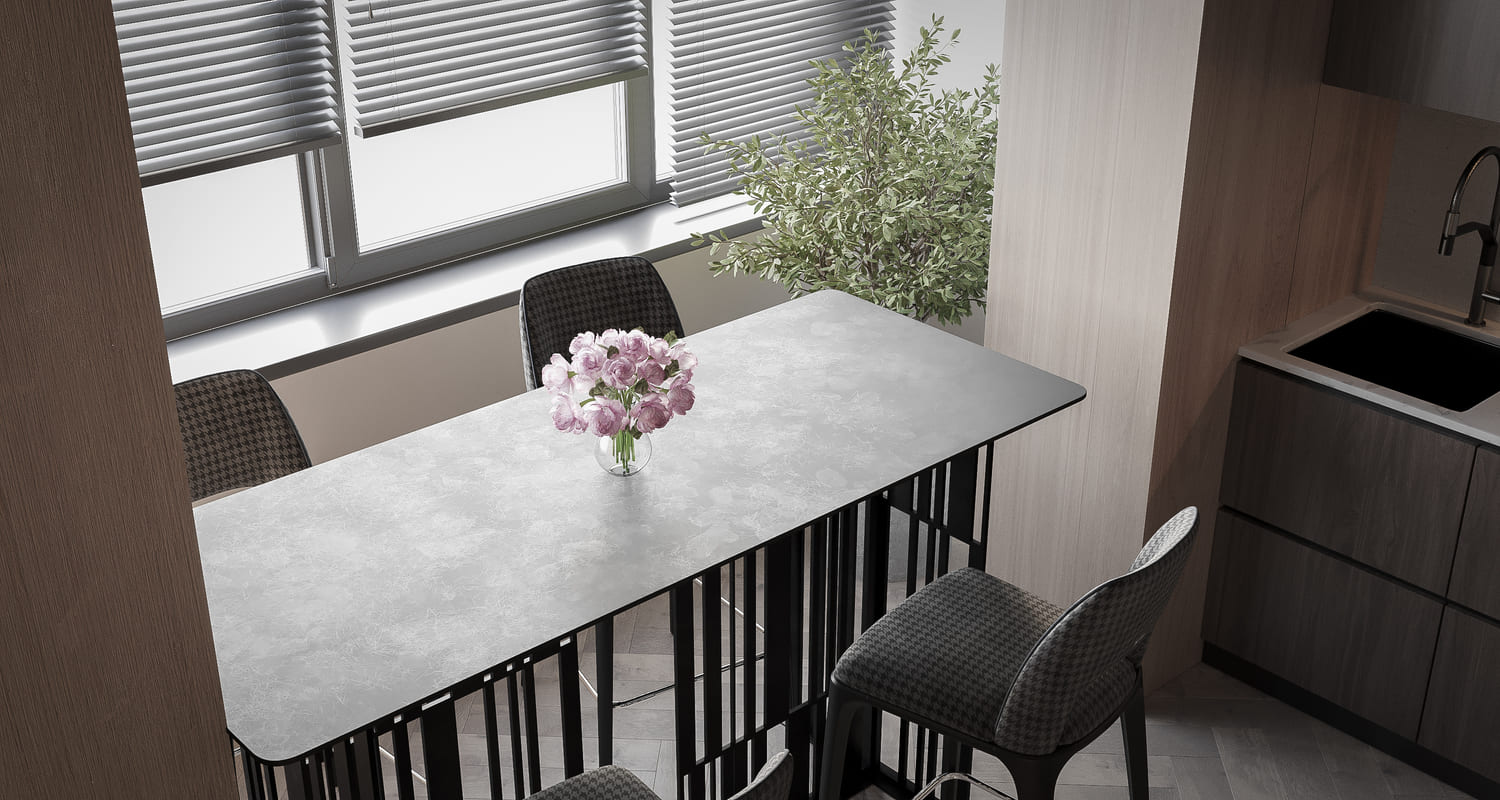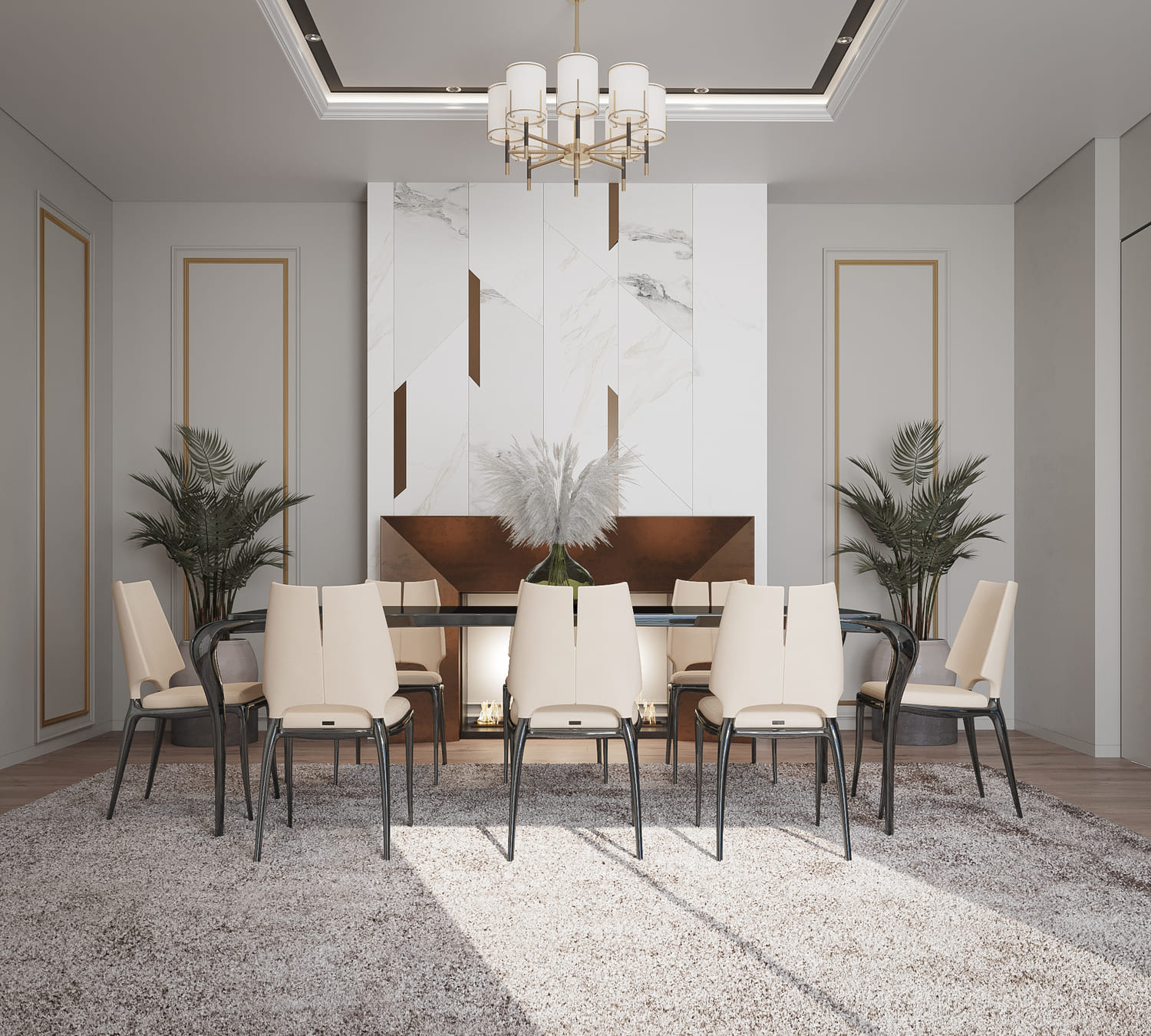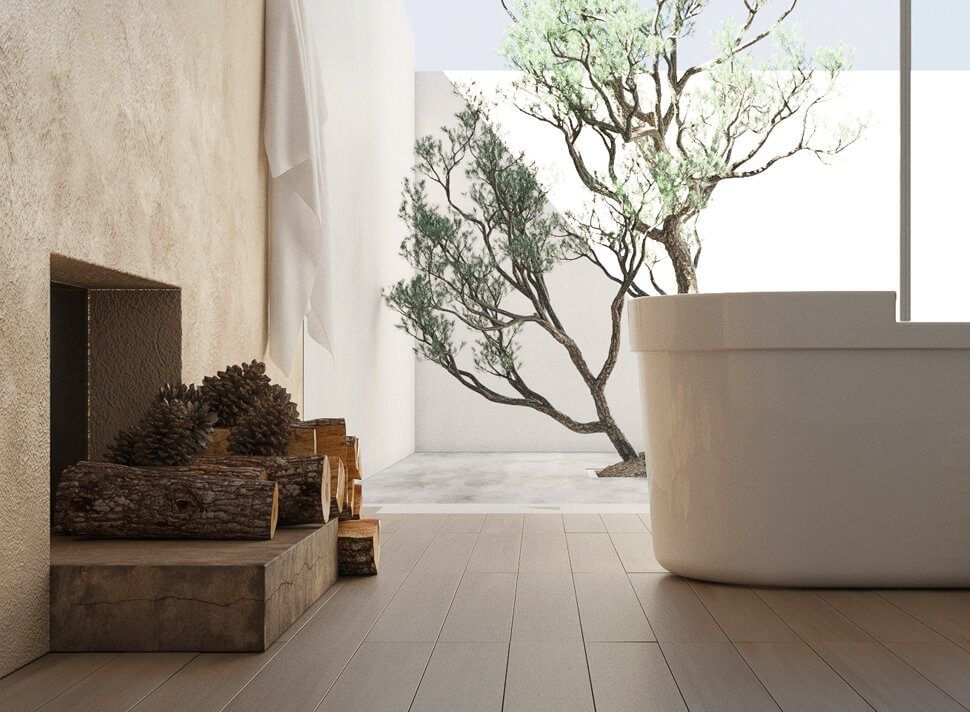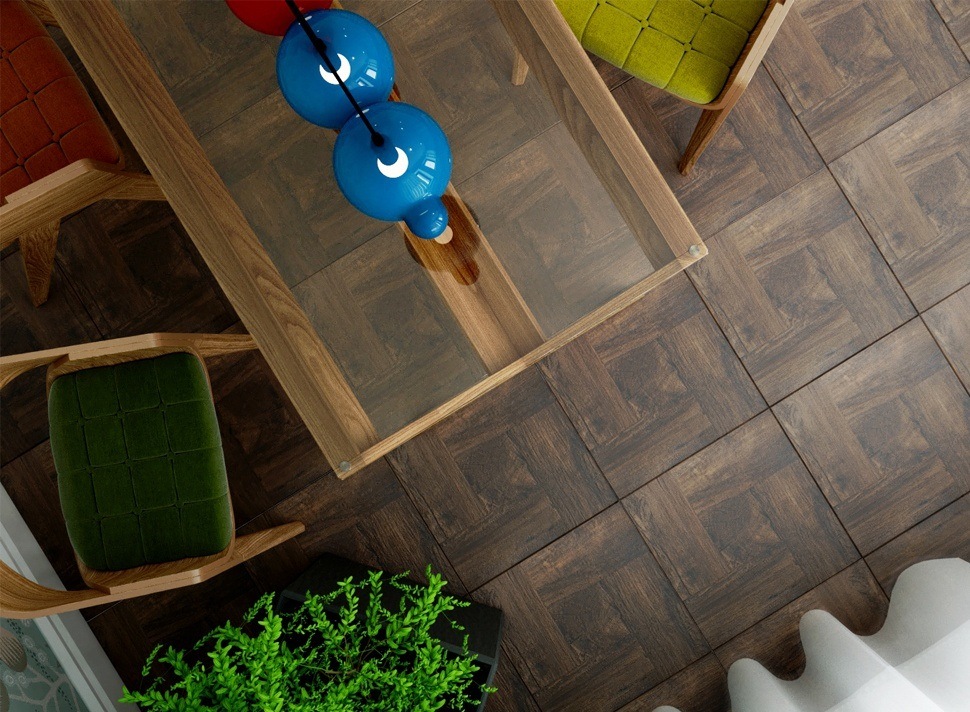What is Interior Rendering and How It Can Improve Your Interior Design Projects
Interior rendering is creating 2D or 3D digital models of interior spaces. These models are then enriched with textures, lighting, and other details to create realistic visualizations of how a room will look once it’s finished.
Interior rendering is a valuable tool for interior designers, as it can help them showcase their creativity, improve their productivity, and impress their clients. This article will explore how interior rendering can enhance your interior design projects.
What is Interior Rendering?
Interior rendering can be done using software or services that allow designers to create photorealistic images or videos of their designs. These images or videos can show the space's colors, textures, materials, furniture, appliances, and accessories. They can also offer different views and perspectives of the space, such as floor plans, elevations, cross-sections, or panoramas.
Many types of interior rendering software and services are available in the market, each with features and advantages. Some of the most popular ones are:
1. V-Ray
V-Ray is a powerful rendering software that can create high-quality images and videos for various projects. V-Ray is compatible with many 3D applications such as SketchUp, Revit, Rhino, 3ds Max, Maya, and more. V-Ray offers photorealistic lighting, materials, and cameras that can help designers create realistic and detailed renderings of their designs. V-Ray also has a cloud rendering service that can speed up the rendering process using online servers.
2. Homestyler
Homestyler is an online interior design tool that can help designers create 2D or 3D models of their designs. Homestyler has a user-friendly interface that allows designers to drag and drop furniture, appliances, and accessories from an extensive library of items. Homestyler also has an AI decoration feature that can intelligently decorate empty rooms with the chosen style. Homestyler can also generate photorealistic renderings and panoramas of the designs.

Image from Yousee Studio
3. Lumion
Lumion is a versatile 3D rendering software that empowers architects and designers to bring their creations to life with stunning visualizations. It offers real-time rendering capabilities, allowing users to instantly see the changes they make to their designs. Lumion provides a vast library of high-quality materials, objects, and environments, making it easy to create realistic landscapes and interiors. With its intuitive interface, Lumion is suitable for professionals and beginners alike.
4. Chief Architect
Chief Architect is a comprehensive home design software known for its powerful 3D modeling and rendering features. It enables architects, home builders, and remodelers to create detailed architectural plans and interior designs. Chief Architect offers tools for creating accurate floor plans, generating 3D visualizations, and producing construction documents. It's particularly popular in the residential design industry for its ability to create realistic walkthroughs and renderings of homes and interiors.
Why is Interior Rendering Important for Interior Design
Interior rendering is essential for interior design because it can help designers to:
- See how their designs will look and make any changes or improvements as needed.
- Experiment with different styles, colors, materials, and lighting for their designs and find the best solution for their design goals and preferences
- Present their designs to their clients and stakeholders clearly and persuasively.
Save time and money in their design process and outcome.
Interior rendering can help designers see how their designs will look in reality by creating realistic and detailed visualizations of their ideas. This can help designers check if their procedures match their expectations and make any necessary adjustments or improvements. For example, designers can use interior rendering to see if the colors they chose are harmonious or if the furniture they placed fits well in the space.
Interior rendering can also help designers experiment with different styles, colors, materials, and lighting and find the best solution for their design goals and preferences. This can help designers explore various options and alternatives for their designs and see how they affect the mood and atmosphere of the space.
For example, designers can use interior rendering to see how changing the style from modern to rustic or changing the color from blue to green affects the space.
Interior rendering can also help designers present their designs to clients and stakeholders clearly and persuasively. This can help designers explain their design concepts, demonstrate their value proposition, and get feedback from their clients and stakeholders.
For example, designers can use interior rendering to create stunning presentations that showcase their designs in a realistic and immersive way.
They can also use interior rendering to create interactive experiences that allow their clients and stakeholders to explore the space in 3D or virtual reality.
Interior rendering can also help designers save time and money in their design process and outcome.
- This can help designers reduce the need for physical mockups or prototypes, which can be expensive and time-consuming.
- This can also help designers avoid errors or mistakes in their designs, which can lead to rework or delays.
- This can also help designers collaborate with other designers or professionals involved in the project, such as architects, engineers, contractors, or suppliers.
- This can help designers to deliver high-quality designs within budget and deadline.
How Interior Rendering Can Improve Your Interior Design Projects
Interior rendering can improve your interior design projects in various ways. Here are some of them:
Creating Realistic and Detailed Visualizations of the Design Ideas
Interior rendering can help designers to bring their design ideas to life in a vivid and precise way. They can use internal rendering software or services to create photorealistic images or videos of their designs, showing the space's colors, textures, materials, furniture, appliances, and accessories. They can also use interior rendering to create different views and perspectives of the space, such as floor plans, elevations, cross-sections, or panoramas.
These visualizations can help designers see how their designs will look in reality and make any changes or improvements as needed. For example, this video by Chaos shows how V-Ray can help interior designers create realistic and detailed renderings of their designs.

Image from Yousee Studio
Experimenting with Different Styles, Colors, Materials, and Lighting
Interior rendering can help designers try various options and alternatives for their designs. They can use interior rendering to change the style, color, material, or lighting of any element in the space with a few clicks. They can also use interior rendering to compare different scenarios or combinations of elements and see how they affect the mood and atmosphere of the space.
These experiments can help designers to find the best solution for their design goals and preferences. For example, this video by Homestyler shows how their online interior design tool can help designers experiment with different styles, colors, materials, and lighting.
Communicating the Design Vision to Clients and Stakeholders
Interior rendering can help designers present their designs to clients and stakeholders clearly and persuasively. They can use interior rendering to create stunning presentations that showcase their designs in a realistic and immersive way. They can also use interior rendering to create interactive experiences that allow their clients and stakeholders to explore the space in 3D or virtual reality.
These presentations and experiences help designers explain their design concepts, demonstrate their value proposition, and get client and stakeholder feedback. For example, this video by NoTriangle Studio shows how they use interior rendering services to communicate their design vision to their clients.
Enhancing the Efficiency and Quality of the Design Process and Outcome
Interior rendering can help designers save time and money in their design process and outcome. They can use interior rendering to reduce the need for physical mockups or prototypes, which can be expensive and time-consuming. They can also use interior rendering to avoid errors or mistakes in their designs, which can lead to rework or delays. They can also use interior rendering to collaborate with other designers or professionals involved in the project, such as architects, engineers, contractors, or suppliers.
These benefits can help designers to deliver high-quality designs within budget and deadline. For example, this article by Designblendz explains how interior rendering can enhance the efficiency and quality of the design process.
Tips and Trends for Interior Rendering
Interior rendering is not only a technical skill but also an artistic one. To create impressive interior renderings that stand out from the crowd, designers need to follow some tips and trends that can help them improve their renderings. Here are some of them:
Use references for inspiration:
References are a great source of inspiration for interior renderings. They can help designers learn from other designers’ work and see how they combine their ideas, styles, colors, materials, and lighting. References can also help designers achieve realism in their renderings by mimicking the natural world as closely as possible. References can be found from various sources such as websites, magazines, books, photographs, or even real-life spaces.
Define a clear and exciting direction:
Before starting an interior rendering project, designers must define a clear and compelling path for their design. This means having a clear idea of what they want to achieve with their design, what style they want to use, what mood they want to create, what message they want to convey, and what audience they want to target. A clear direction can help designers focus on their design goals and avoid getting lost in the details.
Pay close attention to materials:
Materials are one of the most important aspects of interior renderings. They can make or break the realism and quality of the renderings. Materials must be carefully chosen and applied to match the design style, color scheme, lighting conditions, and space scale. Fabrics must also have realistic textures, reflections, refractions, bumps, displacements, and other properties that affect how they interact with light.
Lighting is everything:
Lighting is another crucial aspect of interior renderings. Lighting can create different effects on the space, such as brightness, contrast, shadows, highlights, colors, and mood. Lighting must also be consistent with the time of day, weather, and scene season. Lighting can be natural, artificial, or a combination of both. Natural lighting can be adjusted by changing the sun's or sky's position and intensity. Artificial lighting can be adjusted by changing the light sources' type, color, and power. Lighting can also be enhanced by using global illumination, ambient occlusion, caustics, and other techniques that simulate how light bounces and scatters in the environment.

Pick a suitable color scheme:
Color is one of the most powerful elements of interior design. Color can affect the perception, emotion, and behavior of the viewers. Color can also create harmony, contrast, balance, rhythm, and emphasis in the space. Color can be chosen based on the project's design style, mood, message, and audience. The space's lighting conditions, materials, and accessories can also influence color. Color can be applied to the space's walls, floors, ceilings, furniture, appliances, and accessories. Color can also create focal points, accents, or backgrounds in the distance.
Be careful when combining styles:
Interior design styles are the general categories that describe a space's aesthetic and functional characteristics. There are many interior design styles, such as modern, contemporary, minimalist, industrial, rustic, traditional, eclectic, bohemian, and more. Each style has rules and principles that guide the choice of colors, materials, furniture, lighting, and accessories. Combining different styles can create exciting and unique spaces that reflect the designer's or client's personality and taste. However, mixing styles can generate confusion and Chaos if not done correctly. To avoid this, designers need to follow some guidelines such as:
- Choose a dominant style that sets the tone and mood of the space.
- Choose complementary styles that share common elements or characteristics with the dominant class.
- Choose contrasting styles that create a dynamic and balanced contrast with the dominant class.
- Use a consistent color scheme that unifies the different styles.
- Use accessories and details that highlight the different styles.
- Use transitions and boundaries that separate the different styles.
Avoid too many empty surfaces:
Empty surfaces are areas in the space that have no furniture, appliances, accessories, or other elements on them. Bare surfaces can create a sense of spaciousness and simplicity in the area. However, too many bare surfaces can also create a sense of emptiness and boredom in the area. To avoid this, designers must fill some empty surfaces with elements that add interest and personality to the site. These elements can include:
- Artworks such as paintings, sculptures, photographs, or posters
- Plants such as flowers, succulents, or herbs
- Books such as novels, magazines, or catalogs
- Textiles such as rugs, pillows, blankets, or curtains
- Objects such as candles, vases, bowls, or trays
Use high-quality 3D models:
3D models are digital representations of physical objects that can be used in interior renderings. 3D models can include furniture, appliances, accessories, plants, people, animals, and more. 3D models can be created by the designer using 3D modeling software or downloaded from online libraries or marketplaces. 3D models can also be scanned from natural objects using 3D scanners or photogrammetry techniques. 3D models must be high-quality in geometry, texture, and scale. High-quality 3D models can enhance the realism and quality of interior renderings. Low-quality 3D models can ruin the authenticity and quality of the interior renderings.
Experiment with different camera angles:
Camera angles are the positions and orientations of the camera that capture the interior renderings. Camera angles can affect how the viewers perceive the space, such as its size, shape, depth, height, and perspective. Camera angles can also affect how the viewers feel about the space, such as its mood, atmosphere, and emotion. Camera angles can be chosen based on the purpose and message of the interior renderings. For example, a low-angle shot can make the space look more extensive and impressive, while a high-angle picture can make the space look smaller and more intimate. A wide-angle shot can show more of the space and its context, while a close-up shot can show more details and textures. A frontal image can show more of the symmetry and balance of the space, while a diagonal image can show more of the dynamism and movement of the space.
Above all else, experiment:
Experimentation is the key to creating impressive interior renderings that stand out from the crowd. Experimentation means trying new ideas, techniques, tools, and trends to help designers improve their renderings. Experimentation also means learning from mistakes, failures, and feedback that can help designers grow their skills and knowledge. Experimentation also means having fun, enjoying the process, and expressing oneself through interior renderings.
Conclusion
Interior rendering is a valuable tool for interior designers, as it can help them to create realistic and detailed visualizations of their ideas, experiment with different styles, colors, materials, and lighting, communicate their vision to clients and stakeholders, and enhance the efficiency and quality of the design process and outcome.
If you want to know more about interior rendering or get professional interior rendering services for your interior design projects, contact us today. We are a leading interior rendering company specializing in creating high-quality interior renderings for various spaces. We can help you improve your interior design projects with our expertise and experience.
Contact us at YouSee Studio for captivating 3D renderings and immersive virtual experiences.
Ray Lisbon is a content writer and the author of this article.




